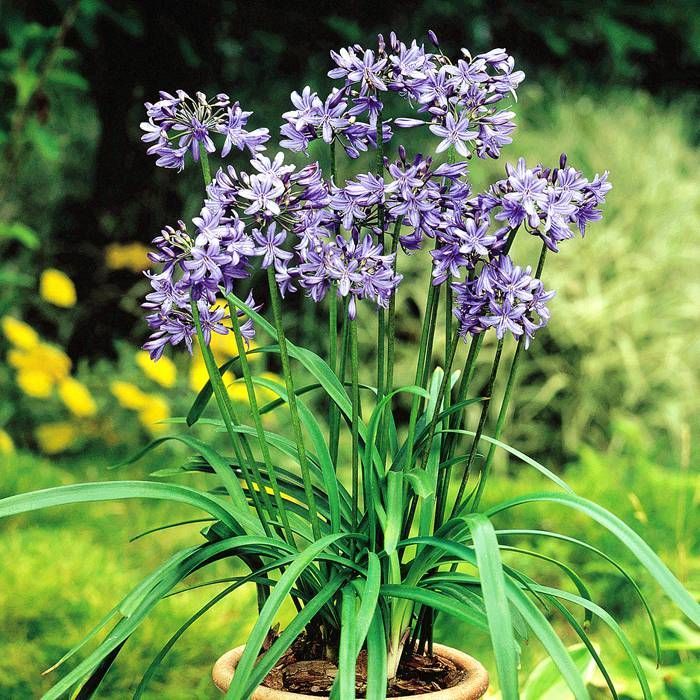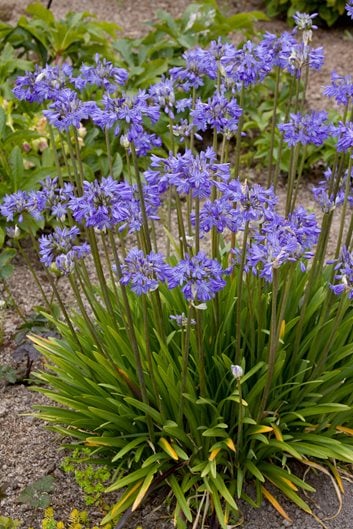Sensational Agapanthus: Enhancing Your Garden's Appeal
Sensational Agapanthus: Enhancing Your Garden's Appeal
Blog Article
Understanding the Art of Agapanthus Treatment: Crucial Actions for Healthy Growth and Vivid Blossoms
In the realm of horticulture, the farming of agapanthus stands as a rewarding endeavor for those who seek to support these classy blooming plants. From selecting the appropriate selection to grasping trimming strategies, the journey towards growing prospering agapanthus plants is multifaceted and holds the crucial to opening the full potential of these botanical treasures.

Picking the Right Agapanthus Range

When selecting the right Agapanthus variety for your garden, take into consideration variables such as climate suitability, blossom color, and development practice. Additionally, think about the climate in your area to make certain the Agapanthus variety you choose can flourish in your particular problems. Recognizing the development habit of different Agapanthus ranges is important for proper positioning within your garden.
Suitable Growing Conditions
Taking into consideration the ideal ecological demands is essential for successful Agapanthus farming. Agapanthus prospers in well-draining soil with a somewhat acidic to neutral pH level. When growing, select a location that obtains full sunshine to partial color. In hotter climates, giving some afternoon shade can protect against scorching of the leaves. Agapanthus plants are delicate to cool temperatures and must be protected from frost during cold weather.
To make certain healthy and balanced development and vivid blooms, plant Agapanthus light bulbs at a deepness of concerning 2-4 inches and room them 8-12 inches apart. Mulching around the base of the plants aids preserve moisture and reduces weed growth.
Watering and Fertilizing Tips
Maintaining proper moisture levels and giving essential nutrients are crucial elements in the care regimen for Agapanthus plants. It is critical to strike an equilibrium when it comes to watering Agapanthus. If overwatered, these plants like consistently damp soil yet are at risk to root rot. Throughout the growing period, water deeply as soon as a week, making sure the soil is well-draining to prevent waterlogging. In hotter environments or throughout periods of dry spell, more frequent watering might be needed to maintain the dirt equally damp. Nonetheless, reduce watering in the winter to stop water logged conditions.
Feeding Agapanthus is vital for advertising healthy and balanced development and prolific blossoms. Apply a well balanced fertilizer, such as a 10-10-10 formula, in the very early spring as new development emerges. Repeat this application every 6-8 weeks throughout the growing period. Prevent excessive fertilizing, as it can lead to lavish vegetation at the expense of flowers. Constantly follow the supplier's instructions for appropriate dilution and application approaches. By complying with these watering and feeding tips, you can ensure your Agapanthus plants grow and produce lively, long-lasting flowers.
Pruning Strategies for Agapanthus
Trimming Agapanthus plants at the proper times and with correct strategies is crucial for maintaining their health and promoting optimal growth and flowering. The perfect time to prune Agapanthus is in late winter season or early spring before new growth emerges.
For flowered stems, wait until the blooms have perished and after that cut them back to the base. This not just cleans up the plant's appearance but also encourages the growth of brand-new blossom buds. Deadheading spent blossoms can additionally reroute the plant's energy right into producing even more blossoms instead than setting seeds. However, if you intend to accumulate seeds for breeding, leave some flowers to mature and dry on the plant.
Remember to make use of clean, sharp tools to make precise cuts and lower the risk of presenting diseases. Agapanthus. Regular pruning will assist maintain your Agapanthus looking healthy and balanced and neat while guaranteeing a bountiful display of lovely blooms
Managing Typical Insects and Diseases
After making certain proper trimming strategies for Agapanthus, it is necessary to deal with common pests and conditions that can impact the health and recommended you read vitality of these plants. One usual parasite that affects Agapanthus is the Agapanthus gall midge.
An additional typical issue is fungal fallen leave area, which offers as dark lesions on the leaves. To avoid fungal diseases, make sure excellent air flow around the plants, prevent above watering, and remove any kind of infected fallen leaves quickly. Furthermore, Agapanthus plants can experience origin rot if they are grown in poorly draining pipes dirt. To avoid this, plant Agapanthus in well-draining soil and stay clear of overwatering. By being attentive and taking prompt action versus illness and pests, you can aid your Agapanthus plants prosper and produce vibrant flowers.

Verdict
Finally, grasping the art of agapanthus care entails picking the appropriate variety, giving optimal growing problems, appropriate watering and feeding, appropriate trimming methods, and dealing with usual parasites and illness. By complying with these important actions, you can ensure pop over to this site healthy development and vivid blossoms for your agapanthus plants. Keep in mind to on a regular basis check and maintain your plants to promote their overall wellness and longevity.
To guarantee healthy and balanced growth and lively blossoms, plant Agapanthus bulbs at a deepness of regarding 2-4 inches and room them 8-12 inches apart. By complying with these watering and fertilizing ideas, you can ensure your Agapanthus plants grow and generate lively, lasting blooms.
One common parasite that impacts Agapanthus is the Agapanthus gall midge. Furthermore, Agapanthus plants can endure from origin rot if they are grown in inadequately draining pipes soil. By adhering to these crucial steps, you can make check these guys out certain healthy development and vivid blooms for your agapanthus plants.
Report this page